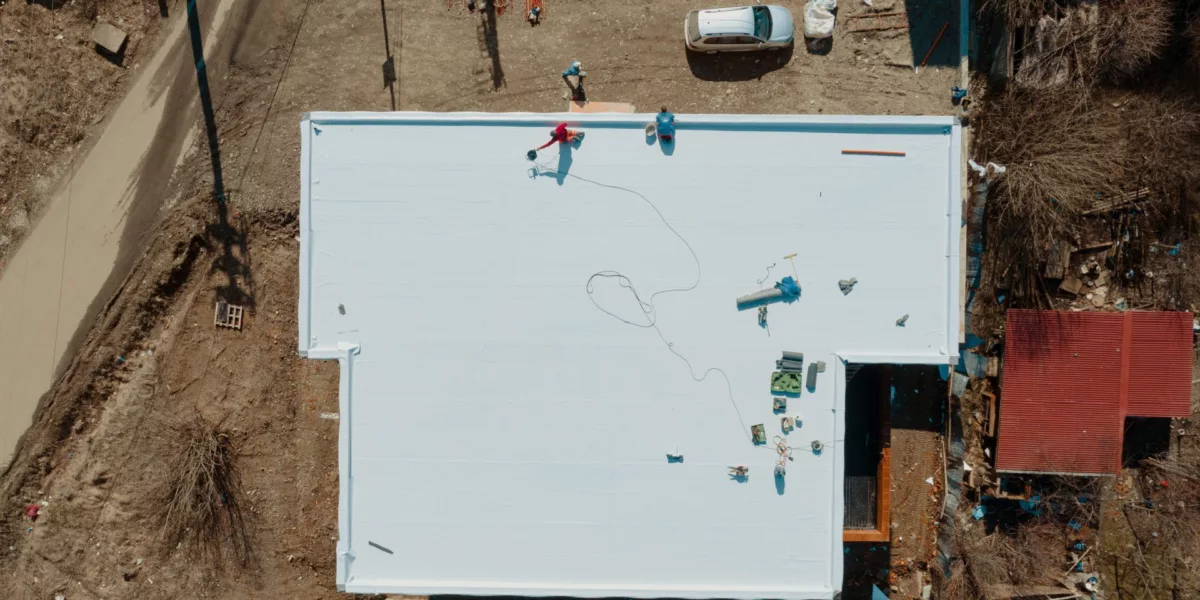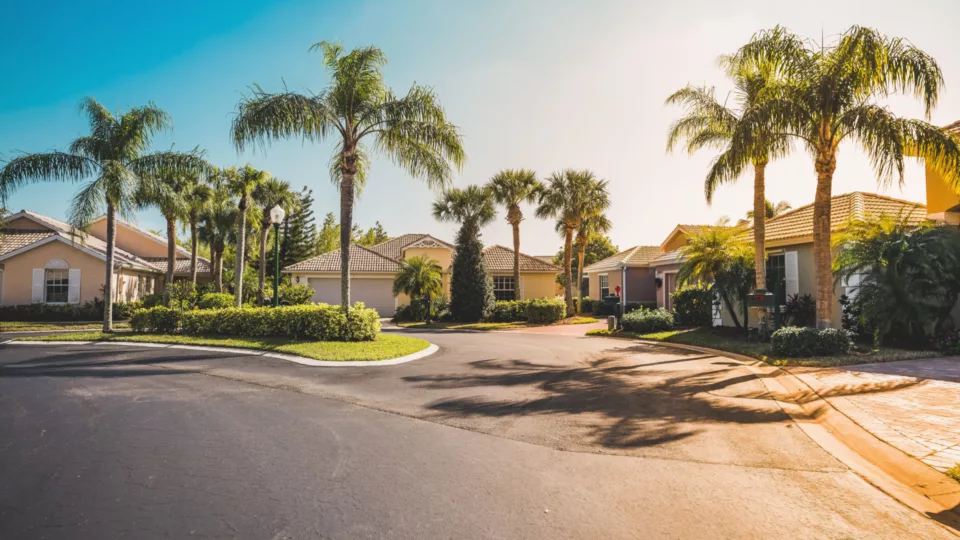In This Article
TPO (thermoplastic polyolefin) roofing has been a popular roofing material since the ’90s. But despite its longstanding reputation as a great flat roofing material in Florida, a lot of people have questions about this roofing option. And with 20 years of experience installing TPO roofing in Florida, Classic Roofing & Construction is more than qualified to answer all of your questions.
Now, let’s talk about what TPO roofing is made of, how it works, and what a TPO roof could do for your home or business.
History of TPO Roofing
Before TPO roofing became the norm, many flat roofs were made of PVC. This started in the 1960s, and this single-ply roofing system was the gold standard. And for good reason—PVC could be shaped to fit nearly any roof structure and was resistant to chemical and physical weathering.
However, people eventually realized that the plastics in PVC were washing off of the roofing material and into the soil. There were also issues with mold developing over time, which would be an especially large issue in humid Florida. As a result, many PVC roofs were weakening before they should have, which caused a host of problems for homeowners and business owners.
CLASSIC ROOFING – FAMILY OWNED AND SERVING THE COMMUNITY FOR OVER 20 YEARS
CLASSIC ROOFING – FAMILY OWNED AND SERVING THE COMMUNITY FOR OVER 20 YEARS
Clearly, something needed to change. And after years of research, scientists created a solution to these issues: TPO roofing. Although in the beginning, it had a different name.
TPO roofing systems first entered the European market in 1991 under the name flexible polyolefin, or FPO. Only a few years later it entered the American market with the name TPO, which we still use today. And property owners were thrilled to discover that it did everything that PVC did and more. Some of the new benefits of TPO roofing included being:
- Durable and weather resistant
- Made of affordable materials
- Quick and simple to install
- Resistant to heat and UV rays
- Energy efficient
And the rest is history. TPO roofing remains a popular roofing material, particularly for flat (or, more accurately, low-slope) roofs. In fact, it’s so popular that TPO roofing materials account for half of the low-slope roofs in the United States. But what is TPO roofing made of, exactly, that makes it such a competitive roofing option on the market?
What Is TPO Roofing Made Of?

Like PVC, TPO is also a single-ply membrane roofing material. Its membranes are made from a mixture of polypropylene and ethylene-propylene polymers and then reinforced with materials like fiberglass or polyester. These core materials are what make TPO roofing systems puncture-resistant and sturdy enough to keep your structure safe. But there are several important additives that get put onto TPO membranes, and these extra materials add a lot of value to TPO membranes.
These additives include colorants, UV absorbers, flame retardants, antioxidants, and heat stabilizers, in addition to some other, proprietary additives. All of these serve to create a robust, protective TPO roofing system by combatting Florida’s harsh weather patterns. Where extreme heat can wear down roofs, TPO roofs are built to last up to 30 years, even in Tampa Bay.
Thanks to their light coloring and UV resistance, TPO roofs can do a lot to direct heat away from your house and lower your energy bill. And with its water-tight seal, you don’t need to worry about water sneaking past your roofing system and causing roofing or structural damage. In this way, TPO stands up to two of the biggest problems for roofs in Florida. But what kind of roofing systems are good fits for TPO?
Is TPO a Good Fit for My Roof?

Each roof in Florida has unique needs depending on location, size of the roof, slope, and a variety of other factors. But in general, we consider TPO roofing to be a great fit for any low-slope roof in Florida. This is because most roofing materials are designed to work with the natural sloping of a structure. But because TPO can be rolled out and adhere to a flat surface, it’s great at preventing water from leaking through and reaching the structure underneath.
For all of the reasons listed above, TPO roofing makes a great option for any flat residential or commercial roof in Florida. It’s also a very budget-friendly option if you urgently need a flat roof replacement but don’t have the budget for a higher-end roofing system.
TPO roofs are also easier to repair than other roofing materials, which can keep the cost of your roof down even as it ages. Nearly all roofs need small repairs from time to time, so it’s important to factor these costs into any decisions about using TPO for your flat roof.
But one of the most important factors in the success of a TPO roof is the installation. So how do you know if you’ve found the right contractors to install your new TPO roof?
Only Trust Professionals with Your TPO Roof
In Florida, there are plenty of roofers claiming to know what’s best for your home or business. But the only thing you can trust is experience. And with 20 years of experience installing TPO roofing systems in Florida, we know how to help.
Don’t just take our word for it, though. We’ve got hundreds of local reviews from people all over Florida who can confirm that we live up to our 100% happiness guarantee. And we’re GAF Master Elite certified, something that only two percent of roofing companies can say. So when you go with Classic, you’re choosing licensed, insured roofers who can seamlessly install your TPO roof.
TPO Roofing – Video
Award Winning Professionals Are Here To Help!






